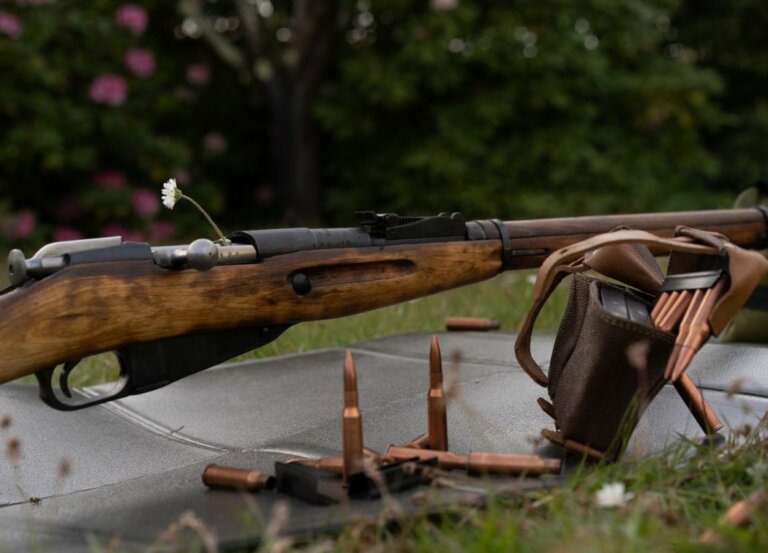How to Shoot a Handgun Accurately?
Just like with everything else, shooting needs practice. When you first put your hand on a pistol and aim at the target, you will probably miss the whole thing, and your bullet will probably end up somewhere out of the borders of the first target circle.
Now, with time, you will become better, that’s for sure. But it is essential for you to know all the basics and to start from scratch, building your way up to the moment when you will hit the center every single time.
You just need to have patience and to learn from your mistakes. Here is how to shoot a pistol accurately and consistently good.
Shooting Stance
The way you stand is one of the most important things in the shooting. It can severely affect your performance, that’s according to every professional shooter out there. If you are insecure with your stance, the chances you will succeed in hitting the target are extremely low.
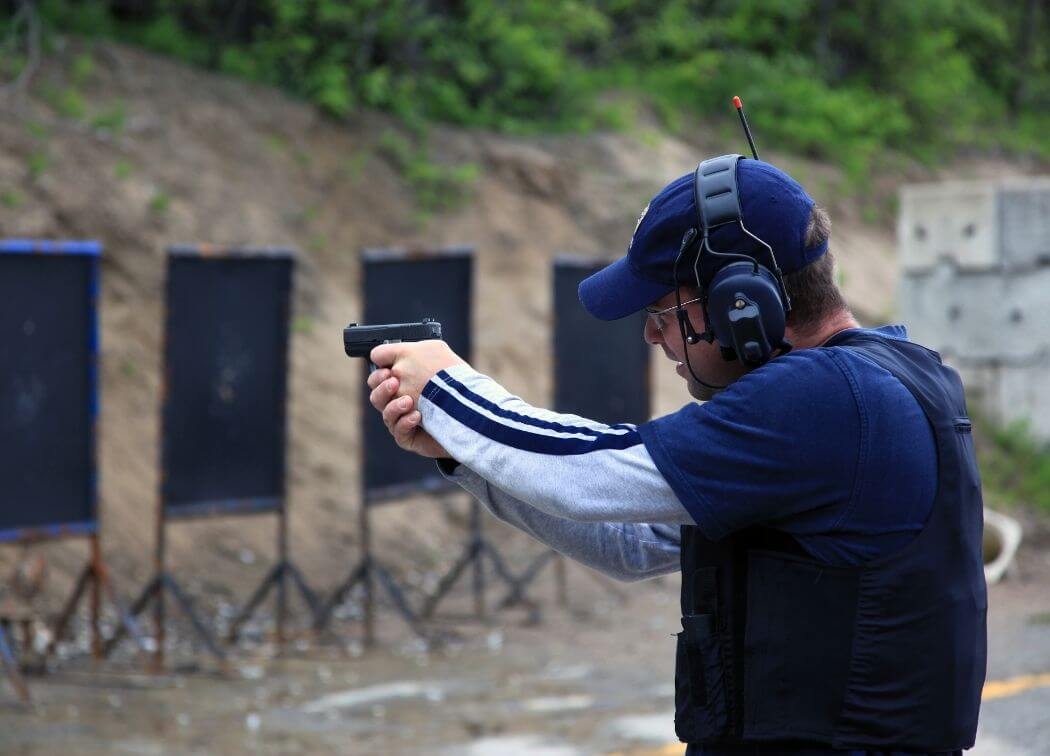
Good posture is what you need to work on from the very beginning if you plan on achieving any progress. Also, the recoil of the weapon can throw you out of balance, which can be quite dangerous, so don’t take this advice lightly.
You need to be comfortable and stable on your feet, in a way you are tilted a little forward. Do not go back with your posture, it’s a mistake.
There are three main types of stance you can take in order to provide yourself with good chances of conquering the shooting tactics – Isosceles, Weaver, and Chapman stance.
Isosceles Stance
The way your body looks from a bird’s eye view is why this stance has this name. It’s because your chest and your arms will make the shape of an isosceles triangle. But let’s start from the beginning. In order to take this stance, you need to spread your feet at a shoulder-width, or a bit wider, with your toes facing the target.
Your arms need to be fully extended in order to allow you to hold the gun with both hands. The gun itself should be positioned right in the centre, in the middle of the chest, at eye level. The knees should be slightly bent, and your whole body a bit tilted forward.
Advantages of Isosceles stance
- It’s the easiest and the most natural stance
- Perfect for beginners
- It allows you to easily and quickly transition to another target
- It is suitable for all people, regardless of their eye domination
Disadvantages of Isosceles stance
- You can be unstable if someone pushes you from back or front
- You are the bigger target, which is bad unless you are wearing a body armor

Weaver Stance
This is a more popular shooting stance than the one we previously mentioned. Again, your legs should be shoulder-width or a bit more open, but in this case, the non-dominant leg should be positioned a bit forward. The body should be slightly leaned forward as well, so you can have a good balance and firm centre.
In this case too, the toes need to be looking straight at the target, so make sure they are grounded that way before you continue. Now, the firing arm should be fully extended, while the other one is bent, and just helping you remain in reasonable control over your weapon.
This way, the shooter can apply a “push-pull” grip, which is based on the firing arm pushing forward and the supporting arm pulling back.
Advantages of the Weaver stance
- It makes sure your body is less of a target this way
- It provides better stability since it’s the most natural position one takes when wanting to remain balance
- It will bring in better recoil management
Disadvantages of the Weaver stance
- You will expose your side to a potential shooter if wearing body armor
- You will be in a problem if you are a cross-dominant shooter
Chapman Stance
According to experts, Chapman stance is actually a modified version of Weaver stance. The lower body looks the same – the feet spread in a shoulder-width, with one leg placed a bit forward, the toes pointing target, and the body slightly tilted towards the gun.
Now, what’s different is the position of arms. In this stance, the shooting arm needs to be fully locked, and the supporting arm bent downwards. If you wonder how to aim a pistol this way, know that you can push your cheek next to the upper part of your shooting arm.
Advantages of Chapman stance
- It will provide better stability
- It will make your body less of a target
- It provides better consistency in shooting if you don’t move your arms
- It brings in better recoil management
Disadvantages of Chapman stance
- You might strain the neck muscles
- You will expose your side when wearing a body armor
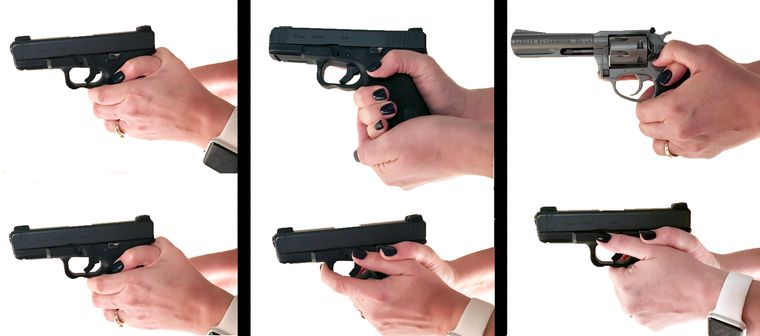
Handgun Grips
If you wanna learn how to shoot a gun, you first need to have the right grip. The idea is to make a gun an extended part of your hand and not a tool you cannot control properly.
The good handgrip will make sure you are on top of the situation at every moment, it will improve the pistol accuracy, and it will help you handle recoil better. Now, what you need to know immediately is what not to do, and that’s a famous teacup grip.
It’s a position of hands we see in movies – when the dominant hand is holding the gun, and the other one is being transformed into housing for the pistol grip.
Even though most people expect to have better support for their weapon this way, that actually won’t be the case. You will be shooting practically with one hand only, given the role of the other one will be non-existent.
Thumbs Crossed
When it comes to placing your fingers properly around your firearm, it is important not to cross your thumbs. It is a very common mistake, and a quite dangerous one because when the slide goes back, it can catch the top of your thumb and cut it real bad. In order to avoid this scenario, you should place thumbs one on another on the same side.
That way, you will even have better support when shooting. If you find that position to be uncomfortable, it’s better to point them upward than to cross them, even though most people think differently.
Index Finger in Front of Trigger Guard
In order to learn how to shoot more accurately, you need to accept and apply certain rules, one of which is never to place the index finger of a supporting hand in front of a trigger guard. Some shooters tend to do so because they believe it will provide them with better control of a recoil, but in reality, it will weaken their grip.
The fact is that recoil travels in the path of least resistance, so when you place one finger in front of a trigger guard, you will lose the stability of the gun and allow the recoil to move your weapon slightly in one direction. It’s much better to keep all your fingers around your dominant hand, below the trigger guard.
Gripping the Wrist
Now, this is a strong no! You should never do what you have seen in the movies probably a thousand times, and that’s wrapping your support hand around your shooting wrist. Yes, it is crucial to make your wrist be steady and firm when shooting, but gripping it with another hand is a huge mistake.
It is important to have both of your hands on the gun if you want to make it more stable and if you want to keep the recoil under control. Also, with both hands on a grip, you will reduce muzzle flip.
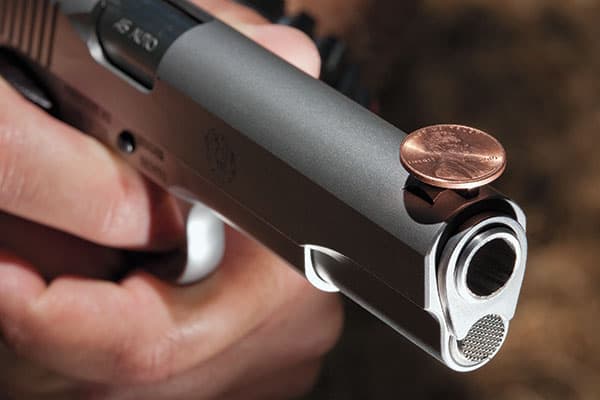
Good Grip Tips
If you wonder how to shoot better, we have some great pistol shooting tips that will provide you with stability and accuracy, which is what we all strive for when holding a weapon. There are two good basic grips you can count on to bring you exactly that. One is a revolver grip and another good semi-automatic grip.
When it comes to revolver grip, it is important to position your shooting hand as high as possible, but in a way to leave enough room for the hammer to do its job.
All fingers of this hand should be wrapped around the grip, except the trigger finger that should be aligned with the frame.
The other hand should be all-around your dominant one, with a thumb lightly crossed over the main thumb. Just make sure to keep all your fingers behind the cylinder in order to avoid being burnt by particles and hot gasses that will be released when the revolver fires.
Now, when we are talking about excellent semi-automatic grip, you should know that the most important thing is to keep your thumbs out of the way from recoil. The thumb and index finger of your shooting hand should be in a V shape, and your hand should be positioned as high as possible in order for you to have better control of the recoil.
But, you should keep the main index finger on the side of the slide until you are ready to pull the trigger. All other fingers should be around the grip, with the middle one touching the bottom of the trigger guard. Place the support hand around the fingers of your dominant hand, just under the trigger guard, and your other thumb on the same side where the main thumb is.
Handgun Aiming & Sight Picture
In order to learn how to shoot a handgun, you first need to know how to aim correctly. That is one of the things that will determine whether or not you are going to hit the target. This part actually is not that hard, but it will take some time and practice before you will be able to do it naturally and with success.
Here are the tips and tricks you need to know when you start going to the shooting range. They will help you tremendously, and with time, transform you into a great shooter.
Aim with Dominant Eye
The first rule you should adopt is to aim with your dominant eye and not to even try doing that with both of them. That’s something that’s pretty much impossible, at least if you want to be successful at shooting.
If you don’t know which one is your dominant eye, try them separately and see when you have a better picture of your surroundings. You can use your thumb and index finger to create a circle through which you can look in order to establish this. Even though it’s not always the case, your dominant eye is usually in the same line as your dominant hand.
Align the Front and Back Sights
The next step is to make sure the front and back sights are well aligned. Every gun has a front and rear sight, and you need to learn how to aim through both of them. Only then you will have a successful shot. The trick is to place your weapon in front of your dominant eye, in the way that the post of the front sight is centred between two posts of the rear sight.
That means your bullet will go exactly where you want it to go. And when you are looking at the front sight between the posts of the rear sight, make sure there is an equal amount of space to both the right and left of the front sight.
Focus on the Gun Sights and Not the Target
When you are aiming, you need to look at the target, and through front sight and rare sight. But it’s pretty much impossible to do all of that at once because our eyes cannot focus on three things at the same time. So it’s essential to know where your focus needs to be in order for the shoot to be a success.
Even though most people will place their eyes only on the target because that’s something that sounds reasonable and logical, the experts recommend shooters to remain focused on the gun’s sights instead on the target. Apparently, that way, your chances to hit the centre will be dramatically increased. The target should remain a bit blurry, and the main focus should be on the front sight.
Choose Your Point of Aim
You should know that there are three main points of aim you can adopt, and we cannot say which one is better – they are all quite effective, so it will be up to you to try each one out and see which suits you the most. The first one is center mass aim, or center hold, for which you need to position the top of the front sight at the center of the target.
The second is six o’clock aim for which the top of the front sight should be a little bit below the bullseye. And the third is known as sub-six aim, and it demands from the shooter to position the top of the front sight more further than the bullseye.

Trigger Pull
You probably won’t think about it, but there are different kinds of triggers, and they can affect the way you feel when shooting significantly.
The expert shooters claim that a bad trigger can ruin the fun completely, while a really good one can make you feel super excited. Now, even though there are a lot of things that can affect the trigger of the gun, two of them are the most important – trigger discipline and trigger control.
These two aspects will cover the subject of skill and safety, which is crucial when it comes to handling any sort of weapon.
Trigger Discipline
This is the first lesson you should learn when you decide you wanna master the skill of shooting. It will prevent catastrophic scenarios that end up with someone accidentally hurting themselves or someone else by shooting a gun unprepared.
The main rule in this matter is – keep your finger off the trigger until you are ready to shoot the target. This part of a gun can be very sensible, and it can go off easily, even when you don’t want it to happen.
The important thing is to practice this until you find your elf keeping the finger away from the trigger unconsciously.
Trigger Pull Stages
In order to know how to accurately shoot a pistol, you will have to go over the basics of the trigger pull stages. There are four stages of pulling a trigger:
- The initial slack – it’s the point where the trigger breaks
- The trigger break it’s the point where the gun fires
- The stop – it’s the point where the trigger stops moving
- The reset – it’s the point where the gun is ready to fire again
Given that there are many things that can go wrong when pulling the trigger, our recommendation is to practice first without any ammunition. That’s called dry fire practice. That way, you will get a better insight into how your gun is behaving.
Tips to Improve Trigger Pull
If you want to improve your skills in a shooting range, you should start by practicing your trigger pull. That’s something that will affect your accuracy in the most positive way and something that will provide you with consistency – a thing every shooter is looking to achieve.
The first thing to do in order to get to that place is to make sure your gun is suitable for your hand. It would not be good for it to be extra-large, that’s for sure, and it would be really bad if you couldn’t wrap your fingers around it appropriately. That’s something that can affect your accuracy for sure. Find the gun that sits naturally in your hand, or change the way you are holding it.
The second tip is to practice your trigger pull without ammo, which we mentioned above. This is something that can allow you to develop some good habits, and it can drastically improve your accuracy, even if you cannot see the results in the first place due to the absence of bullets.
The third thing you will find helpful looking long term is to practice not flinching when firing the gun. You cannot be scared of your own weapon. We understand that the loud sound the gun releases when the bullet is shot may make you lose calmness and steadiness, but that’s something you need to work on because every move you make will affect the precision of the bullet. Just take a deep breath before you pull the trigger, and prepare yourself for what’s coming.
And the last advice we have prepared for you is to stay focused all the time. Whenever the gun is in your hands, you need to be fully aware of every move you make. Both mental and physical focus is required before you pull the trigger and after the shooting is done. Only that way, you will be able to completely control the outcome.
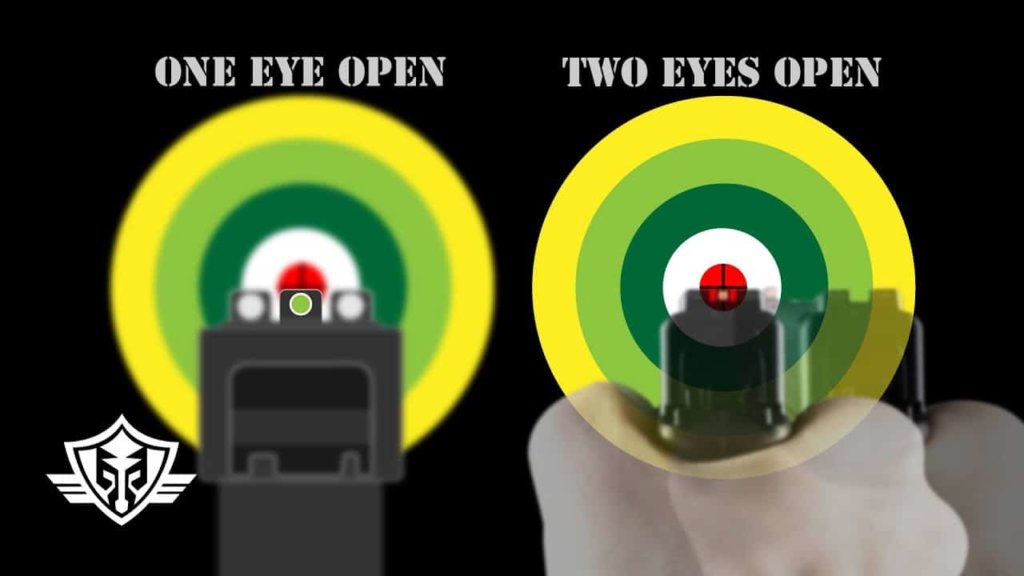
Breathing
What most beginners always forget about is to breathe. There’s a wrong presumption among shooters that they should keep their breath until they release the bullet. But actually, that’s something that will mess up their accuracy, because when you hold your breath for too long, your body may start trembling, as well as your shooting hand.
So what you should do is breathe naturally and calmly. That way, you won’t stand in the way of your own shot. Only snipers need to calculate their breathing and their heartbeat.
Trigger Reset
Remember this – when you pull the trigger and release the bullet, do not move your index finger the same second. Pretty much all inexperienced shooters will do that in order to take a look at the target, but there’s no rush really because you either hit it or you didn’t, and how fast you are going to establish that won’t change the outcome.
When you pull your finger from the trigger fast, you will bring unnecessary movement to the gun, which is never recommended, and you are probably shooting too fast.
Range Practice
Some experts say that too much range shooting, in the beginning, isn’t good because we probably didn’t practice enough dry firing first, which is recommendable. It would be good to combine these two – a couple of dry fire shots, and then you can insert the ammo.
When it comes to distance, you should start with a short one, under 15 yards, given that factors like wind, the ammunition type and etc., can affect your shooting accuracy significantly if you are practicing on more distant targets. Now, in order to start strong and confident, you can fire the first couple of shots from a supported position.
Then, you should move on to a regular stance and continue firing. The important thing to remember is not to lose focus and concentration over time, because you will start forgetting about your lessons. For long-range shooting tips read our other article.
Shooting Gear
If you would like some help on your way to become a better shooter, or you would like to be more comfortable in a shooting range, here is what you may find to be helpful:

Snap Caps
Snap caps are shooting accessories that exist to make sure the dry firing does not cause any damage to your weapon. Those are small devices shaped like a regular cartridge, but they do not contain primer, gunpowder, or any other essential element. They are great for .22LR but also for other calibres when you are practicing reloading.
Laserlyte
Laserlyte is a great tool that can be of huge help when it comes to target practice. It is a device that can be attached to your pistol, and it needs to be paired with targets that can detect lasers. With the help of laserlyte, you will achieve more accurate shooting in no time, and it can be fun to play with it for some time.
Red Dot Sight
Red dot sight is a very powerful piece of gun equipment that can improve your aiming at the target. It is a small device you will need to place on top of your gun frame, and it will most definitely affect your overall performance positively. Red dot sight will highlight the target and make every shot more accurate.
Ear Protection
In order to make yourself comfortable and safe while practicing shooting, you should get several pieces of protective equipment. One of those is ear protection that will muffle the sounds significantly, which is something beginners will really look forward to. The truth is, there is a possibility of your hearing being seriously compromised when spending a lot of time in a shooting range.
Shooting Glasses
Another thing you should consider always having while practicing shooting is shooting glasses. When the gun is fired, there are small dangerous fragments of metal and debris you need to protect your eyes from, and these glasses will be of great help. The best thing is that they won’t stay in the way of your performance by any means.

Final Pistol Shooting Tips
In the end, let us share with you several tips we found to be very useful. They will provide you with an answer on how to shoot a handgun accurately. The truth is, shooting a gun is not something you cannot conquer, it’s just a matter of your determination to become good at it.
And becoming a great shooter is actually about small things, details you are paying attention to every time you hold a gun. So here is what you need to bear in mind:
Grip the Gun Hard
You cannot hold your gun with wobbly hands. You need to own it every single time and to grab it without any sort of doubt. Your grip needs to be strong, and with both hands with an equal amount of pressure.
Now, it would be good to hold a gun tighter with your right hand if you are a left-handed person, and vice versa, in order to align the amount of strength that’s applying to the gun. But do not over-squeeze it because the muscles in your hand might block, which will affect your precision and overall performance.
Follow-through
It is very important not to hurry to see where your shot went after you pull the trigger and to follow through with every shot properly. The fact is it went where you aimed, and you will establish that pretty quickly, there’s no need for you to be so impatient and to rush to see.
If you do so, there are great chances you will bring unnecessary movement to your gun, which may affect and mess up your next trigger pull, and you really don’t want that.
Be Fluid
Your every move before and after you pull the trigger should be very smooth – from your stance, your feet position, a handgrip, aiming, to the way your shoulders and arms behave. As long as you are all stiff, with brisk movements, there are great chances your performance will be mediocre.
The smoothness is something that will come naturally to you after many practice hours, and it will prove you are finally ready and one with your gun.
Be Patient
There’s no room for a rush when holding a gun and shooting. Even though the level of adrenaline will be high whenever you are in a shooting range, this is not a discipline for people who cannot get a hold of themselves. You need to be patient during shooting.
Take your time always, aim properly, slow down, and let things flow at their natural pace. Patience is a virtue that will be of great help here.
And Finally Practice
First of all, you need to know that you won’t become the best shooter in the world after a few days you have spent in shooting range. Not even after a year. But as long as you are practicing, you will be becoming better and better, that’s for sure.
You just need to be patient and to adopt and apply all the tips from professionals, but also to carry through every shoot in order to learn from your mistakes.

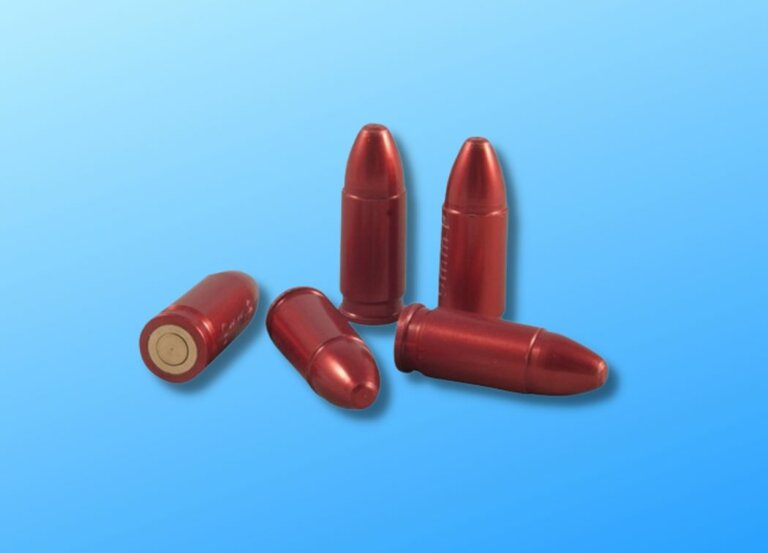

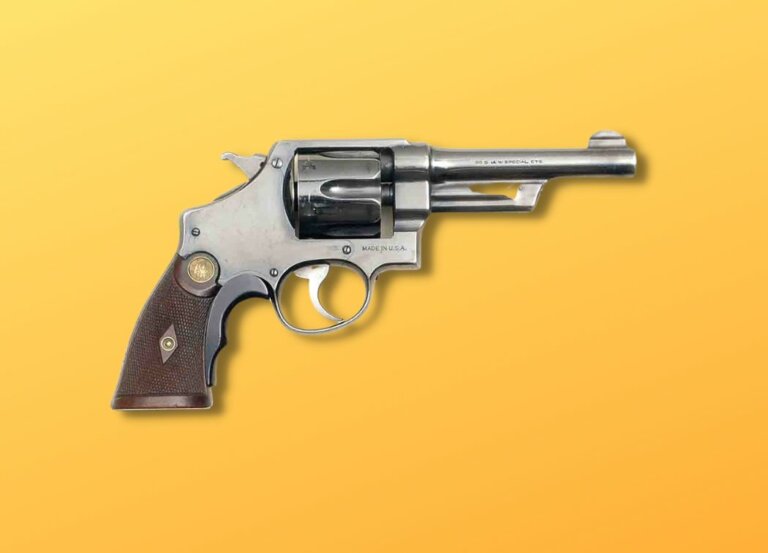
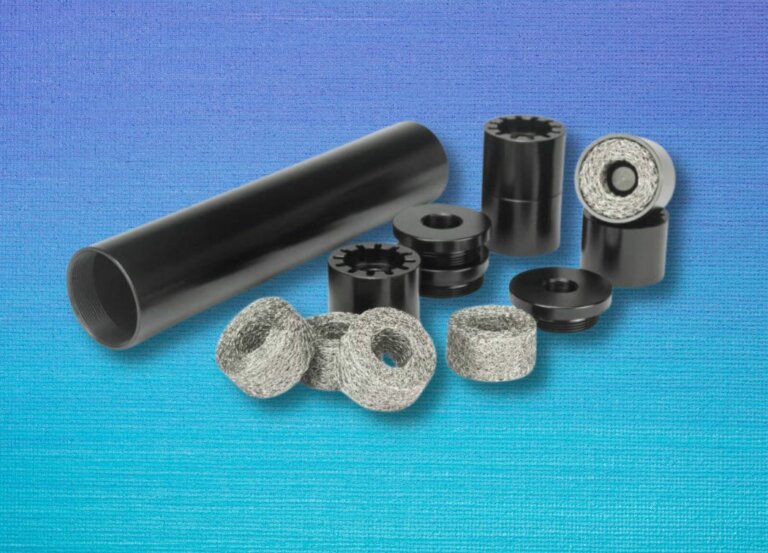
![Are There Any 9mm Lever Action Rifles? [Solved]](https://anthonyarms.com/wp-content/uploads/2022/11/Are-There-Any-9mm-Lever-Action-Rifles-768x553.jpg)
